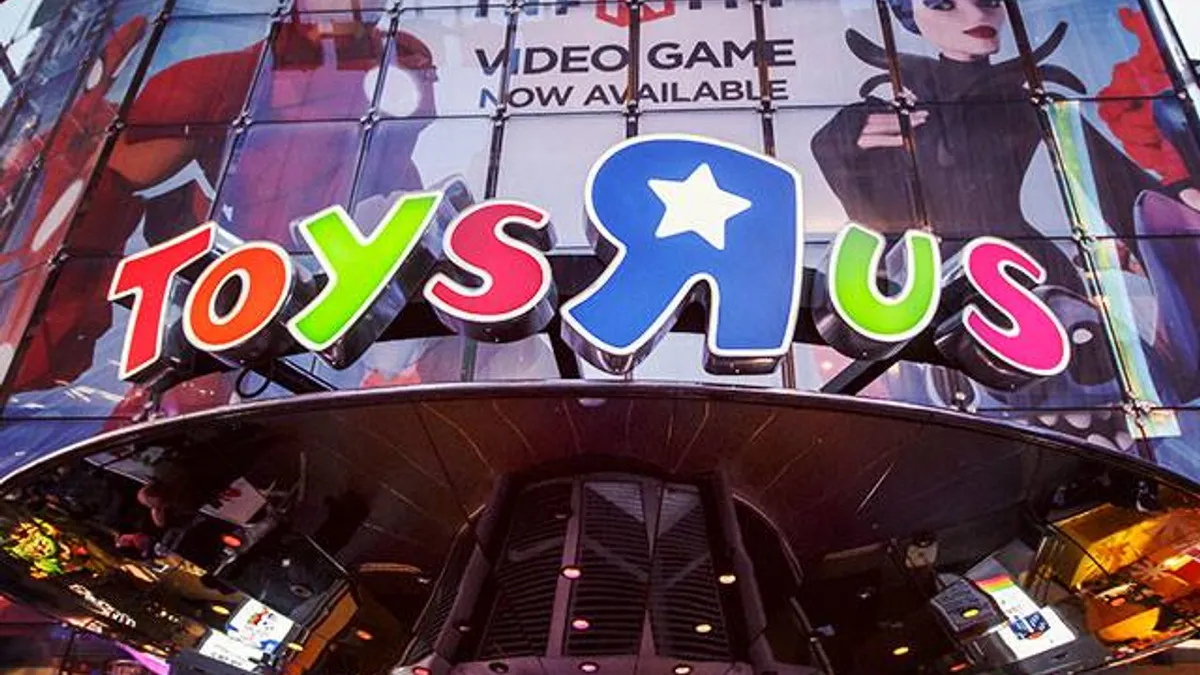The following is a guest post from Jason Grunberg, SVP of marketing at CM Group, a marketing tech company. Opinions are the author's own.
After shuttering hundreds of stores and filing for bankruptcy, Toys R Us rose from the ashes with a few experiential stores that opened in time for the holiday season. Many a marketer has suffered flashes of fear when reading a headline about a legacy retailer in big trouble. It's common to hear about store closures and missed quarters, but it's not often that a huge brand gets a do-over like Toys R Us.
Time to pay attention.
Two organizations resurrected the Toys R Us brand: TruKids, a team bent on reviving the toy retailer and B8ta, a tech retailer with an experiential model. TruKids CEO Richard Barry is the former chief merchandising officer at Toys R Us. So far, the approach the team has taken is highly unusual for a legacy retail brand, and lessons abound for marketers who wonder "what if?" Brands can watch and see whether experiences can revive a beloved brand for a new generation, if an affiliate model is enough to sustain sales, and how such a plan can act as a runway to a broader rollout.
Affiliate sales for now and later?
An important element for brands to watch in the ongoing Toys R Us resurrection is the fact that the company has partnered with Target as an affiliate resale partner online. The Toys R Us website directs shoppers to Target for purchasing, where they can take advantage of Target's two-day shipping. This basically means that Toys R Us is an affiliate website for Target.
This arrangement is an interesting experiment about brand equity and supply chain consolidation. Marketers should watch closely to see if Toys R Us can sustain its presence through affiliate revenue alone, or if it slowly brings back direct sales. It's hard to see why it would want to amass its own warehouses and supply chains if it can make enough with a partner. Heck, Target might eventually take over the entire brand if the deal works well.
Many brands compete with Amazon — the ruler of all supply chains — and so the idea of having no supply chain is certainly enticing. How could a brand reinvent itself if it could simply attract consumers and then send them off to someone else for the transaction? In truth, it could end up being more complicated, not less.
There are a million little "moments" that add up to customer experience, and Target will own and manage many of them. Consumers must remember to use Target for returns and customer service, and Target must prepare its staff to manage Toys R Us customer interactions seamlessly. Both Target and Toys R Us have to consider their respective loyalty memberships. Not only do the two organizations need to fight over how they create loyalty, customers will want to take advantage of their own loyalty benefits on Target.com.
Then there's retargeting and marketing. Both Toys R Us and Target will need to coordinate the ongoing customer experience, and will need to integrate data and workflows across CRM, email and personalization to do it effectively. What's more, email and push messaging can drive future in-store traffic, another campaign marketing element between the two brands that must be sorted out.
Partnerships and affiliate deals that bring in new revenue streams are certainly worth investigating, but brands should consider these experiences in terms of the necessary logistics and customer experience. It's not always easy for brands to access their own CRM data or personalize their messaging, let alone in coordination with supply chain partners. Yet, consumers still expect a seamless experience.
Experiential? Experience it for yourself
Pop-up shops, such as LoveSac's 700 new activations inside Costco will give customers a chance to experience the brand and touch and feel the products. Brands like ThirdLove are partnering with McKinsey to test out new technologies that can make in-store experiences more personalized. Now, Toys R Us is using a store space to provide a play place for kids.
But that's the odd part. The revenue model isn't as clear in the Toys R Us store as it is in other pop-ups out there today. The new store doesn't try to sell that many toys, with most of the space resembling a kid's birthday party venue. Getting parents to open their wallets isn't exactly the point of the new stores — at least not yet. It appears the store exists to recreate some magic around the brand for parents and kids alike.
This new retail trend to create experiences, with different ways to drive revenue, is still being tested. Camp, another new play-based toy chain claims to only make half their money from toy sales, earning additional revenue from merchandise and ticket sales.
Different kinds of experiential marketing create different outcomes: free social media marketing, new loyal fans, higher in-store sales volume and increased brand awareness. For any marketer looking to get in on the experiential game (and not based near a Toys R Us), do a quick search and head out to experience some that are already open nearby. Check out a Capital One Cafe to see how busy it is and who's doing what. Take a gander through an Insta-friendly art experience like Color Factory to see how creative talent can be used. Visit a pop-up doughnut shop to see how excited people are to try crazy flavors (but maybe not buy them.)
While ROI rules, experiences can act as bridges to get consumers over a particularly tough hurdle. It's best for brands to identify those hurdles rather than play copycat to an experience that a competitor or cool brand touts in headlines.
We all want Toys R Us to succeed as it tests novel solutions to many real-world retail problems. In fact, Toys R Us sustained a host of smaller toy brands that simply can't compete on Amazon, and so the world is a richer place if retail can find a way to help unique ecosystems thrive. Perhaps Toys R Us finds that happy medium by engaging kids with a great brand, directly selling only specialized toys and making lots of money from an affiliate relationship with Target. By observing, testing and learning from Toys R Us, all brands might be a little better for their efforts.






















